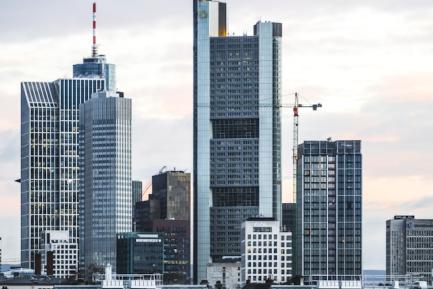
Portuguese investment shines in a year marked by the pandemic
Investment is a key variable which determines productive capacity, helps to boost productivity and economic growth, and supports wealth generation in the medium term. The recent trends in Portuguese investment, having performed well since 2016 as well as holding up during the pandemic, are thus very promising.
Specifically, while GDP shrunk by 7.6% in 2020, investment barely fell by 1.8%, and in Q1 2021 GDP dropped by 5.3% year-on-year (–3.2% quarter-on-quarter), but investment rose by 4.1% (+3.4% quarter-on-quarter), placing it 4.5% above the pre-pandemic level. Thus, in early 2021 investment (gross fixed capital formation, or GFCF) represented around 20% of GDP – the highest level since 2010, albeit still far from the peaks of the early 2000s.

The composition of investment during the pandemic
Investment in the construction sector made a significant contribution to the resilience of GFCF (including residential construction, but more particularly other types). Investment in machinery and equipment also registered a strong recovery after falling in the first three quarters of 2020, and in Q1 2021 it stood more than 8% above the pre-pandemic level.

By institutional sector, the data show that the good performance of investment during the pandemic is largely explained by public investment. In particular, the state carried out a number of investments necessary to combat the pandemic, such as the purchase of healthcare equipment as well as computer products as part of the programmes to boost digital literacy. Moreover, investment in public works, which in recent years had been weaker because of the need for budgetary consolidation, showed a better tone and was driven by the proximity of municipal elections (October 2021). Other public investments, such as purchases of equipment related to the Lisbon metro, have also helped to counter the weakness of GFCF in the private sector. Household investment also held up well, possibly aided by the favourable financial conditions which are incentivising people to buy homes.1
- 1With data up to May, the volume of loans granted to residents for home purchases has grown by more than 30%.

On the other hand, it is also important to analyse the trend in foreign direct investment (FDI), as this is indicative of an economy’s attractiveness and competitiveness. However, FDI does not always translate into a real increase in gross fixed capital formation. In fact, between the end of 2019 and Q1 2021 in Portugal, the volume of FDI2 increased by 4 billion euros, a rise of 2.7%. That said, much of this increase corresponds to mergers and acquisitions, which merely reflect transfers of ownership do not translate into an increase in investment as measured by the national accounts.3
- 2In addition to Luxembourg (18%) and the Netherlands (21%), the main sources of FDI received by Portugal are Spain (21%), France (8%) and Germany (4%). The main sectors are: financial activities (22%), consultancy (18%), real estate (15%), retail and real estate (8%, respectively) and industry (7%).
- 3Some of the most noteworthy deals closed in Portugal between the end of 2020 and Q1 2021 include, in 2020, the sale of Brisa (motorway concessionaire) to the investment fund Arcus, a consortium made up of Dutch, South Korean and Swiss investors, for around 3 billion euros; and the sale of Aquapor, a water and waste systems management company, to the French company Saur for 200 million euros in 2021.

What can we expect over the coming quarters?
The latest indicators suggest that investment will maintain a good tone over the coming quarters. For instance, the latest survey (Q2 2021) conducted by the National Statistics Institute of Portugal on the business sector's investment plans indicates that firms intend to increase investment by 4.9% in 2021, i.e. 6 decimal points more than in the previous survey conducted in October 2020. The containment of the pandemic and the consequent easing of mobility restrictions have improved the outlook for demand. Furthermore, following a period of great uncertainty, in the coming quarters we should see investments that were postponed at the height of the pandemic finally materialise. Besides the fact that 8 out of the 13 sectors included in the survey show a greater appetite for investment in 2021, it is also significant that 36% of the projected investment is aimed at boosting installed capacity.
The same survey suggests that there may be some change in the composition of the economic activities that drive the greatest levels of investment. In fact, construction firms are among those expecting to reduce investment compared to 2020, as a result of certain public works projects linked to the election period coming to an end. In the medium term, however, we can expect to see an increase in investment in residential construction, given that the Recovery and Resilience Plan includes an investment of some 1.5 billion euros in the field of social housing.
Investment in transportation equipment, meanwhile, could show renewed momentum, as transportation companies expect to increase investment by 43% in 2021. In turn, the positive trend in investment in machinery and equipment witnessed since Q3 2020 is expected to continue, as the survey indicates that one of the priorities for businesses is investment in the renewal of productive components.
In short, thanks to public and, to a lesser extent, residential investment, Portuguese investment continued its gradual recovery despite the pandemic. Looking ahead to the future, the receipt of significant EU funds in the coming years should help to sustain this buoyancy. In addition, if used appropriately and effectively, their impact on productivity and potential growth could be substantial.



